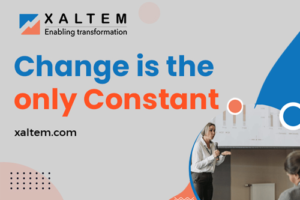Sales is a process of exchange wherein the seller offers goods or services for a price to the buyer. For this exchange to happen meaningfully and sustainably, the value proposition of this exchange has to be meaningful for both parties. The Sales Fundamentals formula conceptualises the relationship between the sales output and its driving factors.
The Sales Fundamentals Formula: –
INPUT X THRUPUT ~ OUTPUT
The driving factors in this formula are “INPUT”, or in other words, the quality, or unique features of the products or services offered by the seller, and “THRUPUT”, which signifies the process through which the goods or services, and the communication regarding the unique features are made accessible to the buyer. The OUTPUT could be sales volume or value or any marker for the same. This relationship will hold for sales in any industrial context (both B2B and B2C). However, for the present, we will examine and understand the formula in the context of sales in healthcare, and more specifically, sales in the pharmaceutical industry.
The role of the Health Care Personnel (HCP) in the pharmaceutical sales (prescription drugs) is unique as they are the primary influencers of the sales while not having a direct buying role (in most cases). So, the INPUT essentially consists of the communication of unique features and benefits for the patients and or the practice of the HCP. In this context, the “INPUT” element has 2 Drivers ~ Share of Voice (SoV) and Quality of Voice (QoV).
Share of Voice: The SoV is important, but not effective in isolation~
SoV is calculated as a percentage, the share of communication targeted at a segment of HCPs related to an organisation’s product or category, compared to the aggregate of communication reaching the same segment and related to the category. The pharmaceutical selling model has been traditionally indexed on the interactions of Reps (Medical Sales Representatives) with HCPs. And driving SoV has been hence the mainstay of marketing strategies of many organisations. While higher SoV will have an impact on higher prescriptions, but not unconditionally. The branded generic industry allows limited differentiation opportunity in terms of product quality. SoV, in isolation, will have diminishing rate of returns beyond a point. Additionally, the access to physicians for calls has got significantly restricted, and even more specifically in hospital accounts, particularly post pandemic. Therefore, it is not feasible to increase the number and frequency of interactions beyond a point and can even be counter-productive. The cost of Reps is also high and typically constitutes the most significant item in the pharma marketing P&L. Hence, an SoV strategy in isolation is not going to be effective.
Quality of Voice: QoV is critically important, but sub-optimally effective in isolation~
As mentioned earlier, the sales exchange has to be “meaningful” and value added for both parties for it to be sustainable. The Rep call is definitely value added for the pharmacos, as it constitutes the prime driver of the strategy. But what about the HCP? Long gone are the days when the Rep was the primary source of updated medical and pharmaceutical product information for most HCPs. So, for the interaction to be “meaningful” for the HCPs, the information in it has to help them drive desired patient outcomes, their practice, or both. This entails super personalization of the communication and services tailored to the practice context of individual HCPs. This would help in cutting the clutter and enabling communication retention and desired behavioural change. However, this would require significant investments in organizational systems, processes and most importantly distinctive capabilities. So, building the “quality” in the voice is critical for success, and yet, in isolation it may not yield the best leverage.
Thruput: The channel mix of messages is of paramount importance; miss it and you lose it ~
After getting the INPUT drivers of SoV and QoV right, it is then important to get the THRUPUT or channel mix right for optimal OUTPUT generation. The targeting of the communication needs to happen at the prioritized customer segments. This requires the market segmentation activity to have identified the sharp segments. The communication channel mix needs to be tailored to the communication preferences of the identified segments. If “meaningful” messages are placed where and how HCPs typically seek information, the potential of enhanced OUTPUT is getting significantly enhanced. Also, the channel elements need to be organized in a complimentary fashion which can be done very innovatively.
The marketing function needs to be the orchestrator of the approach while bringing in the cross-functions and stakeholders to create the symphony. Here the shift required is more about mindset than resource investments. The greatest mindset shift needs first to acknowledge the “elephant in the room” – the Rep is a channel (undoubtedly very important) and not “the” channel. When the INPUT element drivers of SoV and QoV are perfectly aligned with the THRUPUT there can be a great symphony of OUTPUT in terms of demand generation and fulfilment.





